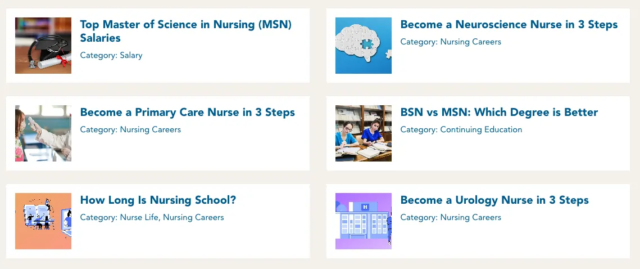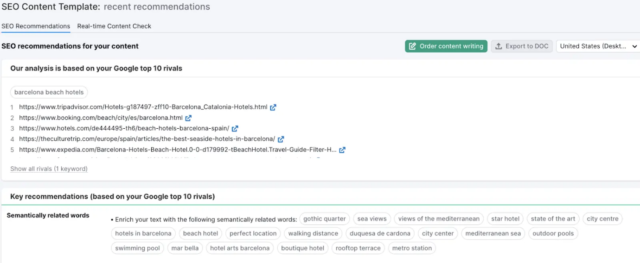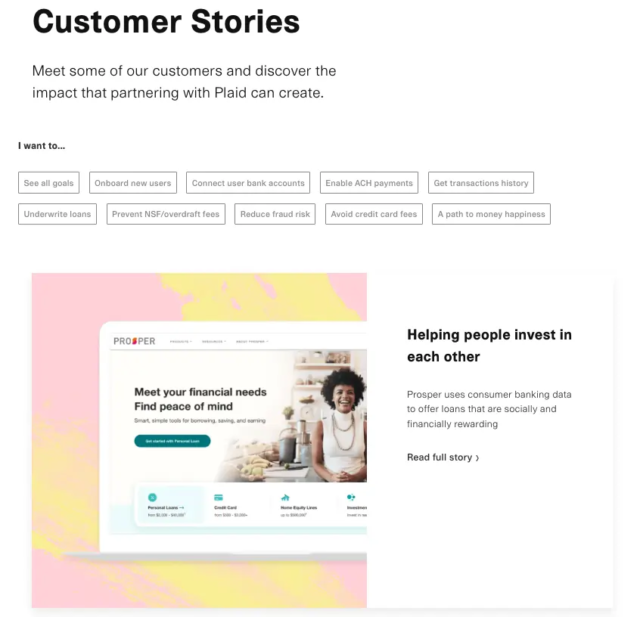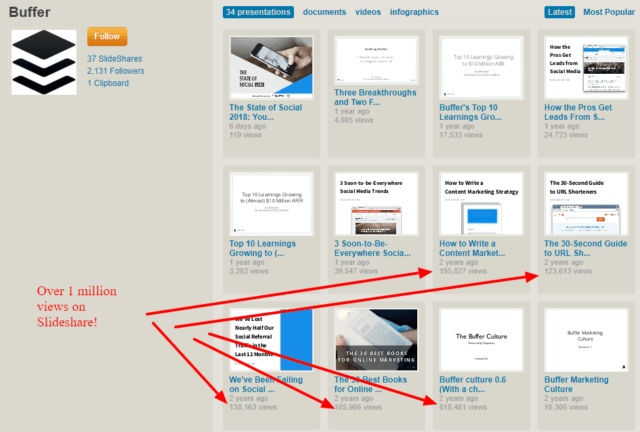Introduction:
Would you believe that your start-up could build its reputation, grow its brand, gain loyal clients, and establish its industry authority – without investing heavily in advertisements? What would happen if you had such a tool to educate and inspire you simultaneously?
Does that sound ambitious to you? That is what content marketing for start-ups is all about. Beyond advertisements, content marketing creates lasting connections via problem-solving, real value, and storytelling.
If you are undoubtedly contemplating, “Should I adopt content marketing? How do I proceed if I choose to adopt it?” then this blog covers all the essential information regarding content marketing for start-ups.
As this guide is filled with helpful tips and insights, it will assist you in:
- Create a content strategy that will work for your start-up
- Create a successful content marketing approach
- Set and accomplish pertinent content marketing goals
Moreover, it will guide you through typical problems, manageable techniques, practical examples, and the tried-and-true procedures for creating an engaging content marketing strategy.
Let us unravel how content marketing may turn into your start-up’s best-kept secret.
What is Content Marketing?
While creating and distributing information in several methods, content marketing techniques position your organisation as an expert in its field and increase the trust of your audience. So we can say that content marketing is an inbound marketing which is effective in customer retention as it attracts clients and boosts loyalty.
Therefore, this is a popular strategy offering a competitive edge since it has proven to be effective. As a result, start-ups can create relationships with their customers or audience, establish credibility in their sector, and gain trust. Take a look at the following data to understand why content marketing is important for your start-up:
- Businesses that inculcate blogs generate 67% more leads compared to other businesses.
- According to 67% of B2B (business-to-business) marketers, content marketing expands lead generation and engagement.
- 88% of consumers credit brand videos for persuading them to buy a good or a service.
Start-up Objectives and Strategies
Start-ups frequently have limited funding and face various challenges in a cut-throat industry. However, some strategies for content marketing for start-ups can help accomplish various key objectives as follows:
- Creating Brand Awareness
Start-ups can expand their visibility and establish an identifiable brand by continuously producing high-quality content. - Generating Leads
Providing insightful information can help in encouraging the clients to interact with the business. This opens the door for lead generation through newsletters, webinars, seminars, etc. - Establishing Authority:
By promoting industry insights, professional views, and expertise, the start-up can establish itself as a leader and gain the trust of its audience.
Moreover, some of the common strategies to achieve the objectives of start-ups are as follows:
- Inbound Marketing, which includes blogs, articles, and SEO-focused content.
- Interviews and articles from the industry that assist in thought leadership.
- Product Storytelling, such as explainer videos and some case studies.
- User-generated Material and Information, i.e., Content that includes community testimonials, shares, as well as reviews.
What Makes Content Marketing an Effective Investment for Start-ups?
Austin Mullins, the CEO of Conversion Media, says content marketing is essential.
The benefits for US and UK Start-ups are as follows:
- Improved Customer Relationships by offering insightful information, which boosts retention rates.
- Content marketing is less expensive than traditional marketing, adopting cost-effectiveness techniques.
- As start-ups expand, their content marketing strategies grow with them, reaching larger customers. For instance, high-quality content enhances your Google rankings.
Illustration:
LiberEat, a food safety technology start-up, employed a content strategy to boost its user base in a cost-effective manner.
In just a span of three months, they:
- Boosted their traffic by 1000%
- Expanded their organic conversions by 25%
- Accomplished sustained growth

Do Start-ups in the Pre-Launch or Early Stage Require Content Marketing?
If you have not yet entered the market or are brand-new, is content marketing for start-ups worth it? In short, the answer is yes! Small businesses and start-ups can undoubtedly gain from content marketing.
Jitesh Patil, Content Specialist and CEO at Toggle says that content may be an effective strategy for generating original awareness about your brand.
7 Steps to Develop Content Marketing Strategies for Start-up Companies
The following are the essential actions you need to increase awareness and expand the growth of your business through content marketing.
Step 1: Gain a Comprehensive Knowledge of the Target Audience
To be honest, if you don’t know who your audience is or have limited information about your customers, then no great content would be useful to you. Therefore, you must comprehend your audience.
Ryan Paul Gibson, Founder of Content Lift and an Investigative Interviewer, advises start-ups to start speaking and knowing their audience to create successful content.
You can gather valuable feedback, discover what your audience actually needs and create fresh content with great ideas if you:
- Start working on customer development
- Begin researching more about your audience
- Establish a direct connection with your potential or present clients by using interviews and surveys
Illustration:
The healthcare staffing start-up Incredible Health links qualified nurses to the hospitals. However, they generate original content for their audience as they help both – their nurses and employers.

Make sure you have a certain amount of knowledge about the content, information, platforms, and websites that your audience makes use of mostly.
For instance, you can take part in pertinent communities on social media platforms including Quora, Facebook, Reddit, LinkedIn and Instagram.
Step 2: Set Research Priorities for Keywords and Topics
The plan of action below is an important step, as Google typically evaluates your coverage of the complete topic rather than just the keywords:
You can begin researching keywords and topics to use in your content marketing strategies when you have a firm grasp of your target audience and their requirements.
Create a list of the high-level subjects you wish to cover before you begin with your writing. Then, for each of those topics, you can begin determining the keywords along with the relevant keywords.
Your future posts and blogs will be shaped by the help of these researched keywords, which will also help you boost your rankings in search engines.
However, make sure to use keywords which will balance low difficulty and high search volume for a decent chance of ranking well.
Illustration:
You can use the tool named ‘Keyword Overview’ to search for the keywords relevant to your topic.
The following is a simple example of how you can target the US and/or UK audience by simply using the keywords relevant to your content
The keyword “Barcelona hotels” has a high keyword difficulty and a high search volume, as shown below in the Keyword Overview tool. You need to understand how using this keyword will have a problematic effect on your start-up if you have limited domain authority.

The keyword “Barcelona beach hotels” may prove to be accurate in the context of your relevant content as depicted in the Keyword Overview tool. Despite the keyword having less search volume, the lower keyword difficulty makes the keyword achievable.

As a result, you may achieve a balance between producing traffic and ranking high on the search engines for the keyword “Barcelona beach hotels” instead of making use of the keyword “Barcelona hotels”.
Moreover, by including a few semantically related keywords or LSI keywords in your content, Google will be able to better interpret your website or page and deliver it to the users who are making relevant searches. This will ultimately grow your business and is an effective strategy for content marketing for start-ups.
For example, you can enter your keyword in the tool named ‘SEO Content Template’ to find semantically related keywords or LSI keywords.

Step 3: Help Your Audience Reach Their Objectives
Stuart Balcombe, Co-founder and CEO of Procket confirm that your content should solve or address the pains of your audience if you feel that your content should gain popularity.
Understanding the pain spots and problems of your audience is the first step in creating content.
For instance, the social engagement platform, OpenWeb assists both the content developers and specialists and the online publishers in fostering online communities.

The OpenWeb platform’s blogs examine problems and current debate topics instead of directly promoting the platform.
As a result, they demonstrate to their audience how attentive they are to their interests, requirements, as well as frustrations.
Step 4: Broaden Your Content
Choosing how your content covers your ideas is the next step if you are satisfied with it. Although the content that you can deliver is truly endless, the majority of content plans are as follows:
- Blogs
While they can cover a wide range of topics, they are search engine friendly and are reasonably flexible. - Sales Enablement
Often referred to as bottom-of-the-funnel material, this helps your sales team as it offers certain reliable references to them. - Case Studies:
As it is one of the effective ways of providing social pieces of evidence, it helps the audience better understand the value of your brand. - Lead Magnets:
They can be used to expand your email lists and generate leads as users must enter their information to receive the content. They can include –- White papers
- Guides
- E-books
- Email Marketing
Moving people from one step to another until they become your regular paying customers is the goal of email marketing. Remember, if anyone gives you their email address as they are interested in your content, then you can assume that they have invested in your start-up. - Podcasts:
They allow you to delve deeply into complex and diverse topics, similar to the blogs. Furthermore, they attract those groups of audiences who do not wish to engage themselves in long-form written content. - Videos:
After Google, YouTube is the most popular search engine, which engages in video delivery. Owing to this type of content blending speech, i.e., audio and visuals in the form of captivating images, videos are the ideal media for feature updates, product walks, explainers, and much more. - Storytelling:
Your readers are more likely to be entertained towards your content as it depicts a real-life event that they might have faced, and they imagine themselves in a similar situation.
Seth Godin, a marketing thought leader, states that “content marketing is no longer about the stuff you make, but about the stories you tell.”
Illustration:
Plaid, a financial start-up, illustrates several stories that show how their products and services have already helped a number of people in overcome obstacles or achieve specific goals.

Step 5: Choose Your Channels of Distribution
This strategy of content marketing for start-ups should specify how you wish to promote your content as well as when and where you want your content to be published, i.e., your distribution channels.
However, to achieve your distribution of content successfully, you first need to determine the distribution channels which you wish to prioritise before actually beginning the distribution.
Following is a list of several distribution channels that you may like to take a look at:
- Owned Channels:
This distribution channel will let you control your blogs, articles, email lists, social media accounts, landing pages, and other platforms. For example, LinkedIn, YouTube, etc. - Paid Channels:
This strategy focuses on sponsored content, influencer marketing, social media advertisements, search advertisements, and other financially supported promotion channels. For example, sponsored Facebook posts and Google advertisements. - Earned Channels:
These distribution channels include such channels which neither do you have direct control over nor do you pay for. It includes social media shares, links, reviews, and mentions. For example, if you share this blog with your group, the owner has earned it.
Step 6: Repurpose Your Content
Content creation can be challenging as well as time-consuming for certain start-ups. This strategy can be helpful to your start-up if you are finding content creation difficult, as you can reuse and publish your content in various formats and channels.
The steps to repurpose your content are as follows:
- Start by creating the landing pages for your e-books.
- Next, produce content for your social media in order to create advertisements for your landing page.
- After that, use a part of the research to create podcast episodes, videos, and even blog posts.
- Lastly, send out several emails which will assist you in informing your audience that you have published your content in the form of e-books, podcasts, or any other form.
Below is an example of a simple email which you can send to your readers:

Pro Tip:
Make various versions of your infographics in order to accommodate several social media platforms. For instance, the content which is effective on LinkedIn or Twitter may not work for Instagram or Facebook.
Step 7: Select the Appropriate Content Marketing Resources
Once you have decided to go for content marketing for start-ups, you will have a lot to do and limited time and finances for marketing. In such cases, you will need all the assistance that you can get.
Some the effective resources for content marketing are as follows:
- Google Trends – It displays the current trends for your key topics. You can use this tool to identify relevant search issues that you may want to write about.
- Google Drive – This is ideal and effective for managing and distributing content as it offers file sharing and cloud storage. Along with this, the tool also integrates with Google Office Suite.
- Topic Research – This tool assists you in finding content ideas and some of the popular and trending topics to incorporate into your plan.
- Keyword Magic Tool – This tool helps you expand your search for the keywords relevant to your topic. It also assists you in identifying the most effective keywords.
- Keyword Gap – You can determine the keywords of your competitor’s rankings on search engines that you might have missed.
- Grammarly – This is an effective tool that checks your grammar and spelling when the work of your start-ups moves quickly and you need to proofread the content before publishing it online.
- ContentShake – A comprehensive writing tool which leverages competitive data and AI (artificial intelligence) for your business expertise.
- Google Analytics – It helps you to effectively analyse your content, identify weaknesses in your marketing strategy, as well as understand your audience.
- Content Management Systems (CMS) – As a software application, this resource assists in creating a website. It also allows you to publish and distribute the content with very limited knowledge or no knowledge of coding.
Case Studies
Buffer, a Start-up Brand, uses Blogging and Transparency
Using the strategy of content marketing for start-ups, Buffer, which is a social media management tool, developed itself into a successful start-up with a simple idea.
The start-up focused more on blogging about start-up culture, productivity, and social media trends, all on a tight budget.
But what is so unique about them?
They shared their extraordinary transparency with their audience, i.e., they shared everything openly from their salaries to their start-up income reports.
Moreover, the Co-founder of Buffer, Leo Wildrich, authored approximately 150 posts within a period of nine months. These posts helped the start-up acquire lakhs of users.
The following are a few start-ups’ content marketing strategies which Buffer followed to become successful:
- They tailored their blog content according to their target audience’s interests, focusing on educational and valuable topics.
- A simple idea of initiating a brand-new blog section named “Open Start-up” which included separate blogs discussing their internal operations, drawing attention from the media and gaining trust.
- Furthermore, as we discussed Step 6 (Repurpose Your Content) above, this start-up followed the strategy and repurposed its content into newsletters, seminars, and e-books.

The following are the results of inculcating these strategies: - 1,00,000 users at the beginning of nine months when 150 blogs were published.
- The blogs received over a million visits each month.
- Without investing a lot of money in advertising, they gained brand trust significantly.
The Start-up Takeaway:
Even in competitive markets and challenging circumstances, authenticity and transparency in content can help your start-up stand apart, expand its user base, as well as gain trust.
2. Dropbox uses Educational and Referral Content to Drive Growth
Dropbox, which is a major player in cloud storage and is widely used by lakhs of users today, grew rapidly as it made use of a referral strategy and content marketing strategies.
But what made it so popular and stand out amongst its competitors?
They included a strong content foundation, which included explainer videos, as discussed above in Step 4 (Broaden Your Content – videos: explainer videos), how-to manuals and guides, and useful onboarding content.
The following are a few content marketing strategies which Dropbox followed to become successful:
- Curated a 2-minute simple to simple-to-understand explainer video that provided a clear explanation of their product on their homepage.
- To increase retention and activation, it included FAQs, user stories, and blog tutorials.
- Furthermore, it made use of newsletters and email sequences to educate its new users.

The following are the results of inculcating these strategies:
- 70% of signups were achieved from referrals, as we discussed this strategy in Step 5 (Choose Your Channels of Distribution – Earned Channels).
- The number of users increased from a million to 4 million within 15 months.
- The strategy of explainer videos boosted 10% of its conversions.
The Start-up Takeaway:
Blogs are not the only source of content. Creative educational tutorials, guides, and videos are also a form of great content as they can help significantly lower friction and increase the acquisition of your consumers.
Conclusion:
For the start-ups who navigate the cut-throat competition of the modern era, content marketing is a potent growth engine.
This all-inclusive guide has guided you through every strategy in depth, i.e., from understanding what content marketing for start-ups is about to practical and real-world examples and a start-up-specific step-by-step strategic plan. It also includes case studies depicting how our strategic plans actually work in the real world.
Success, however, depends on your hard work and dedication to deliver value-driven, realistic, and consistent content.
Thus, be flexible, start early, and keep an eye on your audience. As the story of your start-up deserves to be shared, create content marketing in the way you want to express the story.




